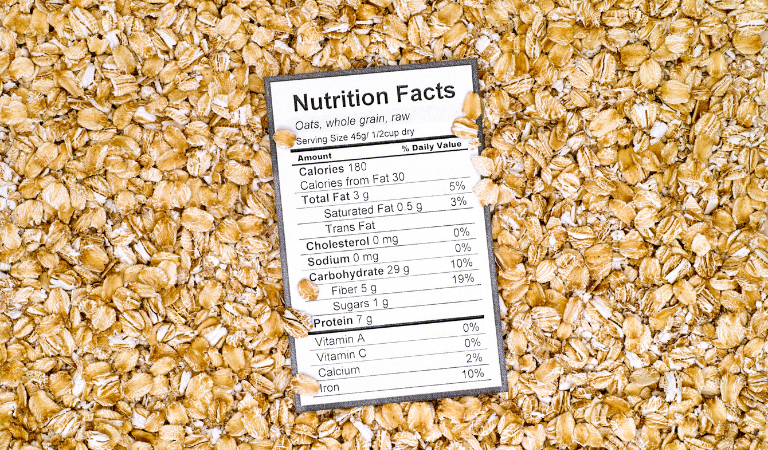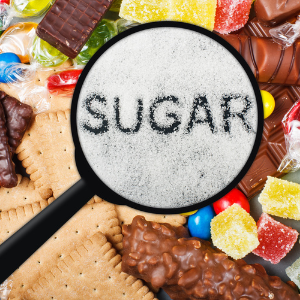One of the most important things you can do for your health is to understand food nutrition labels. With so much misinformation out there about what is healthy and what isn't, it's more important than ever to be able to read and understand food labels.
Food nutrition labels can seem confusing at first, but once you know what to look for, they can be a valuable tool to ensure you are getting the proper nutrients your body needs. Here is a guide to understanding food nutrition labels so you can make the best choices for your health.
What Do Food Nutrition Labels Include?
If you're like most people, you probably don't spend a lot of time reading food labels. However, taking a few minutes to understand the nutrition facts can help you make healthier choices. Let's take a closer look at some of the key information on food labels.

Product Name
The first thing you'll see on most labels is the product name. This can be tricky, as some companies use distinct names for their products in different countries. However, the product name usually gives you a general idea of what the product is.
Ingredients
Next, you'll find the list of ingredients. The ingredients are typically listed in order of highest to lowest concentration. So, if sugar is one of the first few ingredients listed, that means there is a lot of sugar in the product. It's also important to note that some ingredients can be listed under a different name. For example, salt can be listed as sodium chloride.
Nutrition Facts Panel
The nutrition facts panel tells you how many calories and nutrients are in each serving. This can be helpful if you're trying to watch your calorie intake or get enough of certain nutrients like protein or fiber. The panel also includes % Daily Values (DV) for various nutrients. These values tell you how much of a particular nutrient you need for a balanced daily diet.
Serving Size
The serving size on a food label indicates the amount of food that is typically consumed in one sitting. For example, a serving of cereal may be one cup, while a serving of pasta may be two ounces. The number of servings in a package is also listed on the label, so you can easily see how much food you'll get per package. When it comes to portion sizes, it's important to remember that the serving size is a suggestion, not a rule. Depending on your appetite and energy needs, you may eat more or less than the suggested amount.
Additionally, the serving size may not match the amount of food you'll get in one sitting. If you want to know the exact amount of food you will consume, try using measuring cups and spoons to calculate the calories and nutrients. However, in instances such as with a package of cookies containing four servings, you might eat half the cookies in one sitting. It's important to be aware of both the serving size and the number of servings per package when you're choosing foods, so you can make informed decisions about how much to eat.
% Daily Value
The percent daily value (%DV) is the percentage of the daily recommended intake of a nutrient that is provided by one serving of food. The %DV is based on a 2,000 calorie diet, so it is important to keep this in mind when determining how a portion of food fits your diet. The %DV can be found on the nutrition facts label of most foods. When looking at the %DV, it is essential to remember that the recommended intake of most nutrients varies depending on factors such as age, gender, and activity level. For example, the recommended daily intake of sodium is 2,300 mg for healthy adults, but it is 1,500 mg for people with high blood pressure. As a result, the %DV for sodium will be different for these two groups of people. When used correctly, the %DV can be a helpful tool for making sure that you are getting the nutrients you need from your diet.
Calorie Content
The calorie content may be the first thing you may see on most food nutrition labels. This tells you how many calories are in one serving. Remember that because the calorie content listed is only for one serving, you must multiply the calories by the number of servings you consume.
Fat Content
Following the calorie content, you will see the fat content. This includes both saturated and unsaturated fats. Saturated fats are the "bad" fats that can increase your cholesterol levels and lead to heart disease. Unsaturated fats are the "good" fats that can help improve cholesterol levels and reduce your risk of heart disease. You want to look for foods with lower saturated fat content and a higher unsaturated fat content.
Cholesterol
When shopping for groceries, you may have noticed that some food labels include information about cholesterol. But what does this number actually mean? Cholesterol is a type of fat essential for our cells' function. However, too much cholesterol can lead to health problems such as heart disease. The amount of cholesterol in food is measured in milligrams (mg). For example, a food label might list the cholesterol content as 10 mg per serving. This means that each serving contains 10 mg of cholesterol. The American Heart Association recommends limiting your daily cholesterol intake to 300 mg. So, if you are eating food with a high cholesterol content, be sure to limit your portion size accordingly.
Sodium
If you want to know the salt levels of food, check the sodium content. Sodium is an important mineral for our bodies, but too much sodium can lead to high blood pressure and other health issues. You want to look for foods that are low in sodium.
Total Carbohydrates
The carbohydrates will be shown as "Total Carbohydrates," which includes both simple and complex carbohydrates. Simple carbohydrates are the "bad" carbs that can cause blood sugar spikes and lead to weight gain. Complex carbohydrates are the "good" carbs that slowly break down and provide lasting energy. You want to look for foods that are high in complex carbohydrates and low in simple carbohydrates.
Dietary Fiber
Fiber is a nutrient that helps normalize your bowel movements, makes you feel full to help you eat less, and can help reduce the risk of heart disease and other health problems. You want to look for foods that are high in fiber.
Sugar
You might not think twice about the sugar listed on food labels, but it's crucial to understand what that number actually means. The FDA defines "sugar" as "any monosaccharide or disaccharide present in a food." This includes fruit sugar, corn syrup, honey, and other types of sweeteners. However, it's important to remember that not all sugar is bad for you. In fact, your body needs sugar to function properly. The issue arises when we consume too much sugar. When we eat more sugar than our bodies can use, it's stored as fat. This can lead to weight gain and potentially severe health problems like heart disease and diabetes. That's why you must be aware of the sugar content in the foods you eat and ensure you're not consuming too much.

Protein
When you're grocery shopping, it's important to be able to identify which foods are high in protein. That's because protein is an essential nutrient that helps your body to build and repair tissues, produce enzymes and hormones, and boost immunity.
While protein can be very beneficial health-wise, consuming too much protein comes with risks. It can lead to weight gain, kidney damage, dehydration, and more. Unfortunately, many processed foods also contain levels of protein that are higher than the daily recommended intake, which is 50 grams per day based on a 2,000 calorie diet. That's why it's so important to read food labels carefully. If a food label says that a product is "high in protein," this means that it contains 20% or more of the daily recommended intake. "Very high in protein" means that the food contains 50% or more of the recommended amount. So when you're looking for healthy, high-protein food, be sure to check the label carefully.
Vitamins & Minerals
Food nutrition labels include information on the vitamin content of foods. The most significant vitamins for humans are A, C, D, and E. These vitamins are essential for human health and must be consumed in the diet. Some other essential vitamins for human health include the B vitamins, which are necessary for energy production and proper functioning of the nervous system. Vitamin deficiencies can cause various health problems, so it is important to ensure that you are getting enough vitamins from your food.
Minerals are essential to a healthy diet but are not always listed on food nutrition labels. Some minerals, such as calcium and iron, are essential for bone health and energy production. Others, such as potassium and magnesium, help regulate blood pressure and heart rate. A lack of minerals can cause health problems, so you must ensure that your diet includes plenty of minerals-rich foods.
Make Better Choices While Shopping
It is essential to understand food nutrition labels when grocery shopping. This will help you make healthy choices for your eating plan. Be sure to look for items that are high in fiber, protein, and low in sugar. This will help you stay healthy and feel your best. Thanks for reading!








